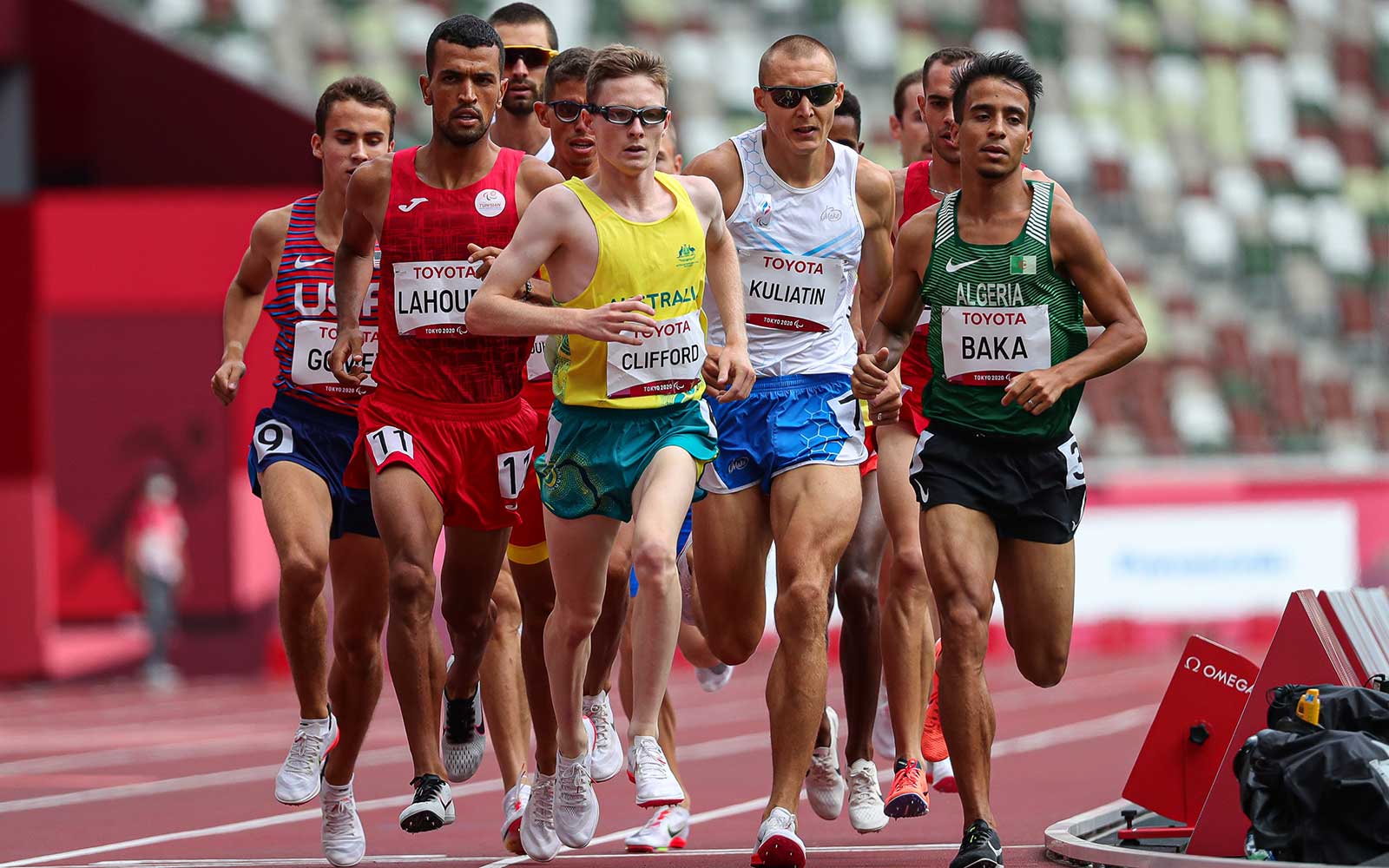One of the most exhilarating and excruciating events in Paralympic athletics – the Marathon – will end the 2020 Games competition on Sunday.
As Jaryd Clifford put it after his silver in the 5000m on the Olympic Stadium track: “The 5K hurts differently from a Marathon hurt. I’m ready for the hurt in that way.”
It will be Clifford’s first Paralympic Marathon. Wheelchair racer Christie Dawes is lining up for fourth after Athens 2004, London 2012 and Rio 2016.
“For me if I’m going to start hurting it’s usually around 28Ks and for some weird reason it lasts about 4Ks. So I know if I can get to 32Ks I’ll be fine because I’m telling myself ‘It’s only 10 to go’,” Clifford said.
Five Australians will be putting themselves through the pain of 42km on Sunday – wheelchair racers Madi de Rozario, Eliza Ault-Connell and Dawes at 7.40am (AEST) followed by Clifford, who is vision-impaired (T12-13), and Michael Roeger, arm amputee (T46), in the standing classes at 7.50am.
Clifford (2:19.08) and Roeger (2:18.53) hold the Marathon world records for their class – set in Sydney in April this year.
Clifford will have two guides to help me negotiate corners safely and get to the drinks stations – Vince Donnadieu (first 21km) and Tim Logan (second 21km).
After Kurt Fearnley blew a tyre on the cobble-stone streets of Athens, forcing him to push the last 5km with a flat, the Marathon can have unique pitfalls for wheelchair athletes – tram tracks, gutters, broken bitumen edges.
Dawes was driven over the Tokyo course on Saturday with her eyes peeled to roadway.
“The surface is wonderful,” she said. “The Japanese people have done a great job of getting the roads in tip-top condition so I’m not worried about any rough bits or potholes.”
The course will pass famous Tokyo landmarks such as Kaminarimon, or ‘Thunder Gate’, in Asakusa, the Imperial Palace, Ginza’s upmarket Chuo Street, and Zojoji temple.
“I feel like it will be won and lost in the first 5K,” Dawes said. “It’s unique in that it starts on the stadium track, where usually most marathons end there. I’ve never started one inside there before.
“Getting up and out stadium is followed by quite a long climb for about 2.5K, so that should put the first few girls away from the rest of the pack, so they can set up a decent break.”
Covid has been particularly hard on wheelchair road racers, who haven’t been able to get to the world marathon circuit or event he domestic events.
“I’m fit but we haven’t been able to travel or race under lockdown for 18 months. So I’ve not done a marathon in that time. There’s a big difference between being fit and being race fit,” Dawes said.
“I’m really lucky that most of my sessions are predominantly on the road – thank goodness roads were still open during lockdown.
“But I’ve not been able to train with my usual training partners, just my husband (Andrew Dawes, on the bicycle with her) but getting care for our two kids while we train together has been another challenge.”
Gymnasiums – and their saunas – have also been closed.
“So I’d sit in my car with the heater on, in my puffer jacket and beanie, having a hot drink for 45 minutes. Now we’re told the Tokyo heat has gone but there’s a 50-50 chance of rain.
“I’ve been doing this for so long that I know how to push in the dry and in the rain.”
By: Margie McDonald, Paralympics Australia
Posted: 4 September 2021



